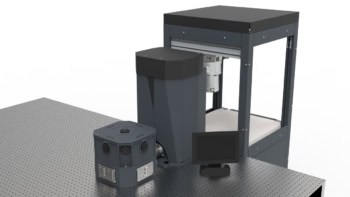By Hamish Johnston
“The death of the astronomical second and the birth of atomic time” is how the British physicist Louis Essen described 3 June 1955, when the world’s first practical atomic clock ticked for the first time.
The place was Teddington on the outskirts of London, which is home to the National Physical Laboratory (NPL). Essen’s clock was based on a beam of caesium atoms and was monitored by microwave technology inspired by his wartime work on radar. The clock was more than a metre long and nicknamed the “Flying Bedstead” by engineers at the BBC, who used it as an input for their radio time signal. The clock made atomic time available worldwide for the first time 60 years ago. Then, in 1967, the second was redefined as an SI unit based on an atomic transition in caesium, thereby ending the ancient practice of defining time though astronomical observations.
In celebration of the anniversary, NPL has put together a website called “60 years of the atomic clock” that includes the above video about the Flying Bedstead. It was filmed in the 1950s and features a narrator with a wonderful “cut glass” accent that you just don’t hear anymore.
The website also features a timeline of key events in the history of atomic time. My favourite is the 1996 visit of the Doctor Who actor Jon Pertwee to NPL. The time-traveller is photographed inspecting equipment that looks much less impressive than the interior of the TARDIS.
In 2014 I was at NPL for the unveiling of a historical plaque about the birth of atomic time. I also recorded a conversation with NPL’s Patrick Gill and Helen Margolis about the future of atomic timekeeping, which you can listen to below.



